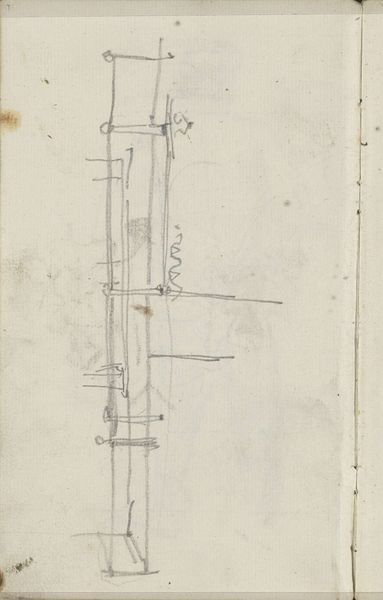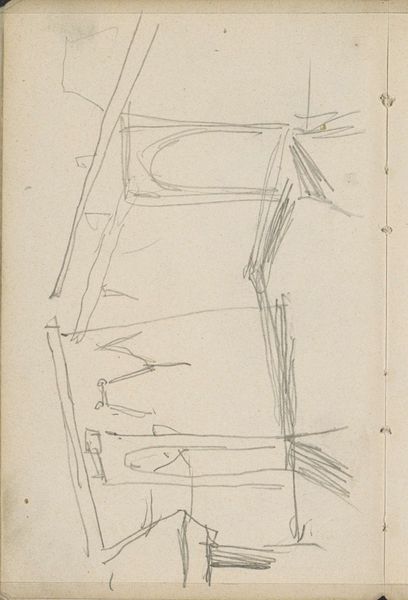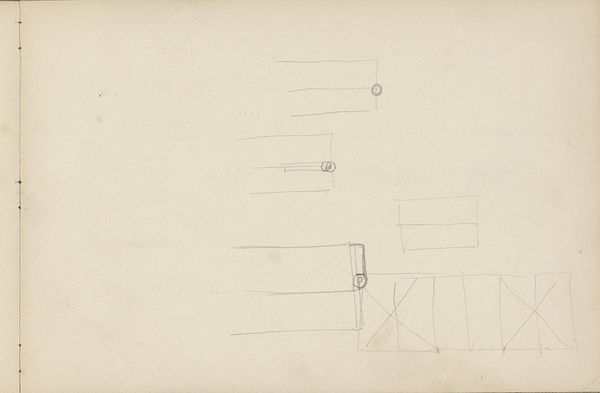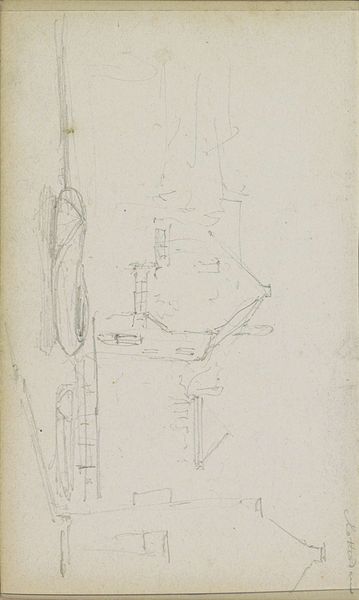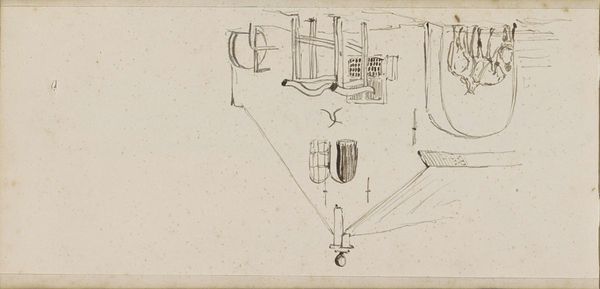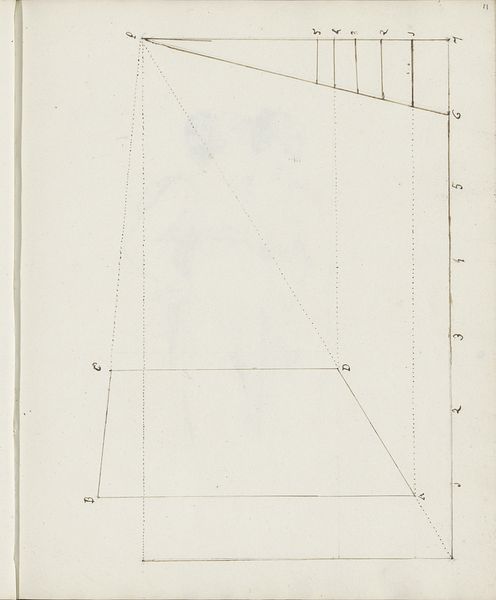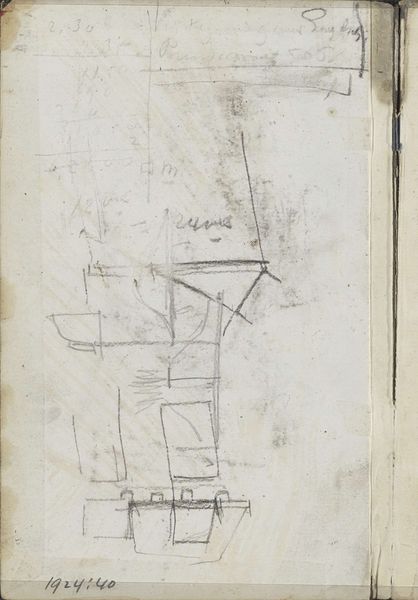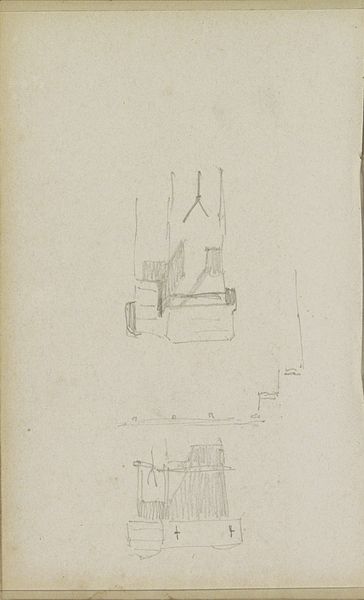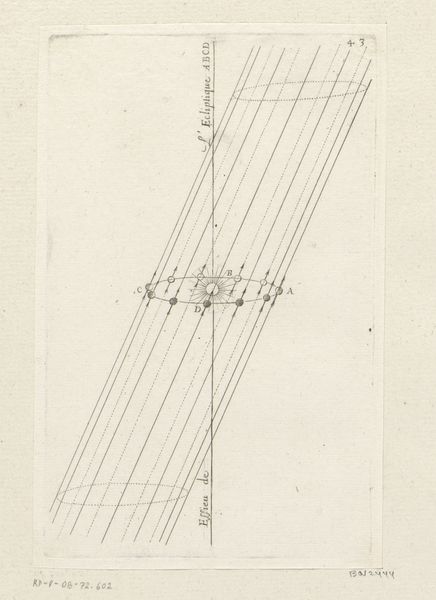
drawing, paper, graphite
#
drawing
#
amateur sketch
#
aged paper
#
hand written
#
art-nouveau
#
sketched
#
incomplete sketchy
#
hand drawn type
#
paper
#
personal sketchbook
#
fading type
#
geometric
#
abstraction
#
line
#
graphite
#
sketchbook drawing
#
sketchbook art
Copyright: Rijks Museum: Open Domain
Gerrit Willem Dijsselhof created these studies with pencil on paper, though the date remains unknown. These drawings offer us a glimpse into the artist’s design process, reflecting the social and cultural currents of the late 19th and early 20th centuries in the Netherlands. Dijsselhof was deeply involved in the Dutch Arts and Crafts movement, which championed the unity of art and craft, emphasizing the importance of aesthetic design in everyday objects. These sketches might be related to his work in furniture design, interior decoration, or even textile patterns, all fields in which Dijsselhof was actively involved. His designs often incorporated stylized natural forms and geometric patterns, reflecting a broader European trend towards Art Nouveau and Jugendstil. To fully understand these studies, one could delve into archives of design schools and workshops of the period. These resources can shed light on the social and institutional contexts that shaped Dijsselhof’s artistic production. The meaning of art, we see, is always contingent on social and institutional context.
Comments
No comments
Be the first to comment and join the conversation on the ultimate creative platform.

